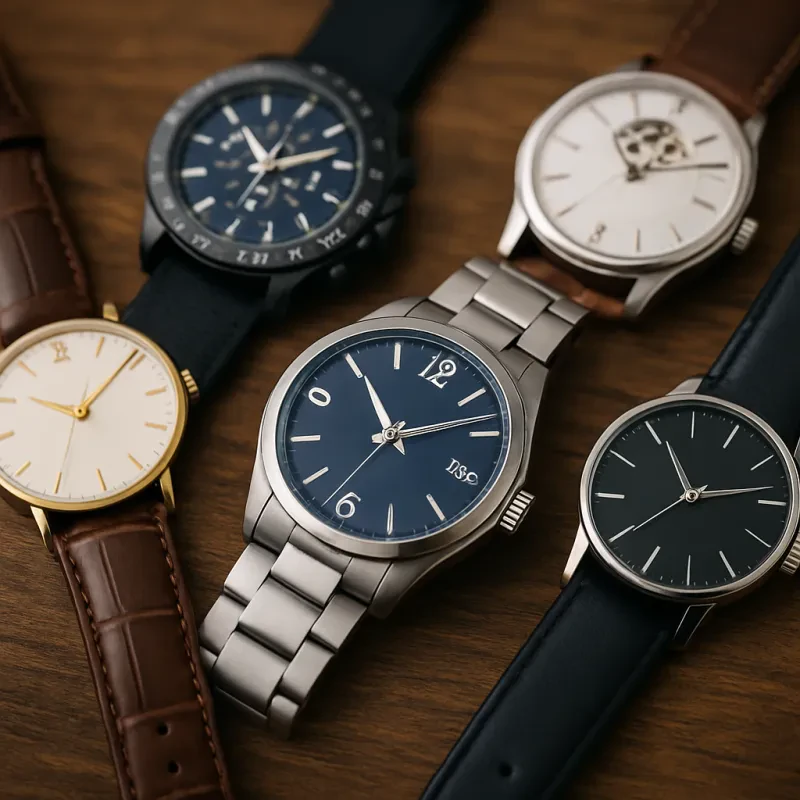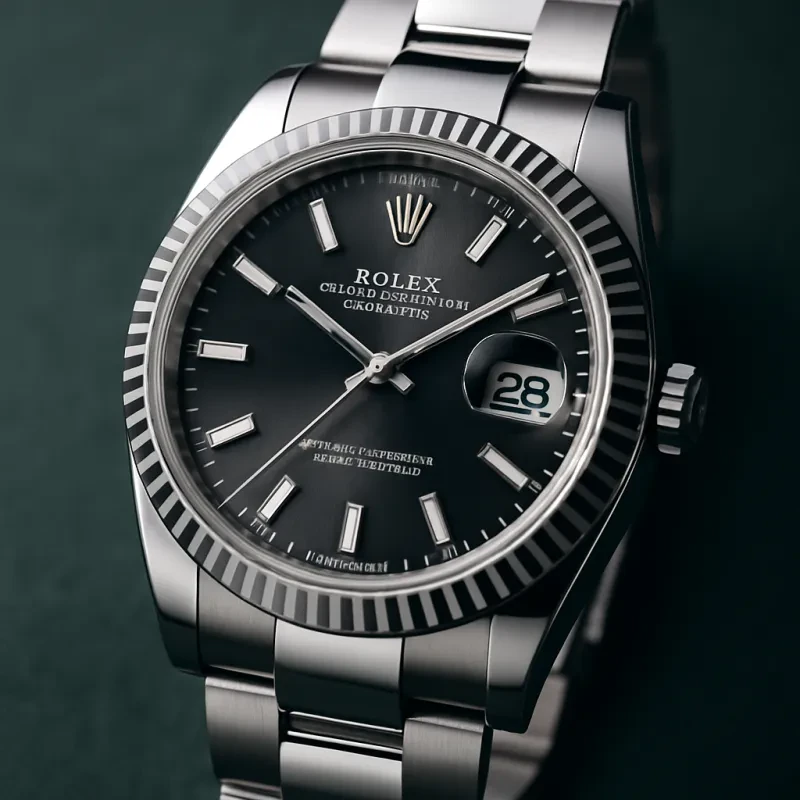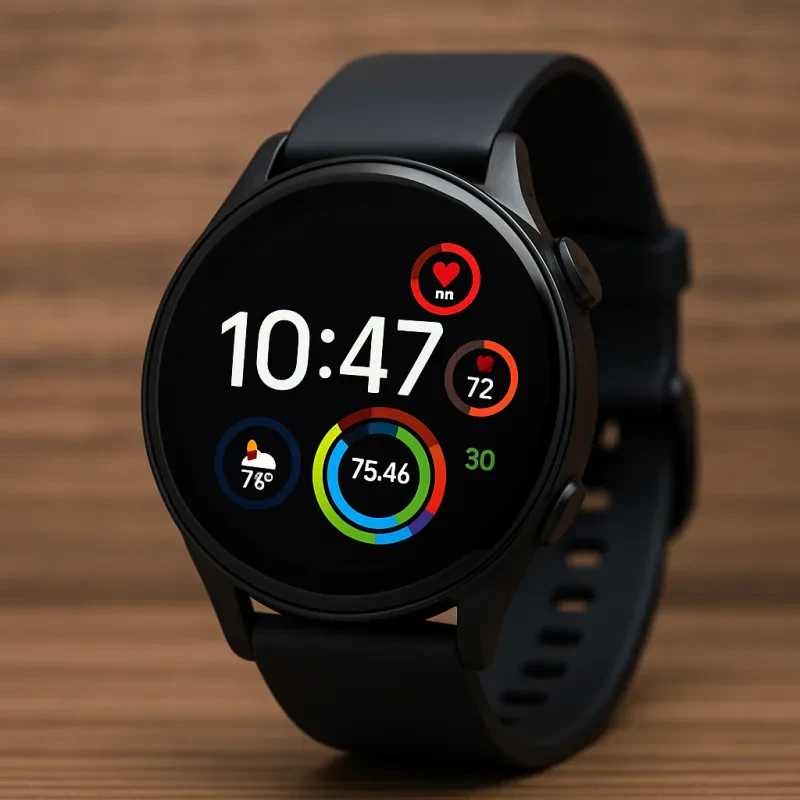When choosing a watch, several key features can significantly enhance your buying decision. Understanding these elements ensures that you select a timepiece that not only meets your practical needs but also reflects your personal style. Here are some essential features to consider:
Water Resistance: One of the most important features to look for in a watch is its water resistance rating. Whether you're swimming, showering, or just caught in the rain, having a watch that can withstand water exposure is crucial for longevity. Watch manufacturers typically indicate how deep the watch can go while remaining protected. Make sure to choose one that aligns with your lifestyle, especially if you're often near water.
Movement Type: The movement of a watch refers to the mechanism that drives it. There are three main types: quartz, mechanical, and automatic. Quartz watches are battery-powered and known for their accuracy, while mechanical options are powered by a complex system of gears. Automatic watches, a subset of mechanical, wind themselves through the motion of the wearer's wrist. Your choice will depend on how you value precision, maintenance, and the appeal of traditional craftsmanship.
Material and Durability: The materials used in a watch play a significant role in its durability and overall look. Stainless steel is a popular choice for its strength and resistance to corrosion, while ceramic and titanium are favored for their lightweight and scratch-resistant qualities. Additionally, consider the watch face material—sapphire glass is highly resistant to scratches, making it an excellent option for those looking for a long-lasting timepiece.
Style and Functionality: Finally, think about how the watch fits into your lifestyle and personal style. From classic dress watches to sporty chronographs, there’s a vast array of designs to choose from. Additionally, features like chronographs, alarms, and digital displays can offer enhanced functionality for various activities. Whether you prefer a sophisticated look or a rugged design, the right style can elevate your everyday outfits while providing the practicality you need.
Understanding Water Resistance Ratings
When shopping for a watch, one important feature to consider is its water resistance rating. This rating indicates how well a watch can withstand exposure to water, which can be crucial for those who lead an active lifestyle or enjoy water sports. Understanding these ratings can help you choose a watch that fits your needs and gives you peace of mind when exposed to moisture.
Water resistance ratings are typically measured in meters (m) or atmospheres (ATM). A watch labeled as 30m (or 3 ATM) is designed to withstand splashes of water, like when washing your hands or in the rain. However, it’s important to note that these ratings do not necessarily mean that the watch is suitable for swimming or diving. For activities involving more significant water exposure, look for watches rated at 100m (10 ATM) or more, which are often labeled as swim-safe.
The highest ratings, such as 200m (20 ATM) and above, are commonly found in diving watches. These watches are designed to withstand the pressure of deep-water immersion and have features that support underwater use, such as rotating bezels and luminescent dials. Always check the manufacturer's specifications and guidelines to understand what activities your watch can handle without compromising its integrity.
Remember that water resistance is not a permanent feature. Over time, exposure to water, temperature changes, and the wear and tear of gaskets can affect a watch's ability to resist water. It's wise to have your watch regularly checked and serviced by a professional to ensure it remains watertight and performs at its best when you need it most.
Movement Types Explained Simply
When it comes to choosing a watch, understanding the different movement types can really help you make the best decision for your lifestyle and preferences. There are three main types of watch movements: quartz, mechanical, and automatic. Each one has unique characteristics that affect accuracy, maintenance, and how the watch feels on your wrist.
Quartz movements are powered by a battery and use a tiny crystal to keep time. They're known for their precision and require very little maintenance. If you’re looking for a reliable watch that you can just set and forget, a quartz watch is a great option. Plus, they come in many styles and price ranges, making them widely available for any taste or budget.
Mechanical movements, on the other hand, are powered by a complicated system of gears and springs. These watches need to be wound regularly to keep them ticking. While they may not be as accurate as quartz movements, many watch enthusiasts appreciate the craftsmanship and artistry that goes into a mechanical watch. They often have a richer history and can be considered more of a collector’s item.
Automatic movements are a type of mechanical movement that wind themselves as you wear them. This means that you don’t have to manually wind them every day, as they harness the motion of your wrist to keep ticking. Automatic watches offer a blend of the traditional artistry of mechanical movements while providing the convenience of modern technology. They strike a balance between timekeeping authenticity and ease of use.
Choosing the Right Watch Material
When it comes to selecting a watch, the material used in its construction plays a significant role in both aesthetics and functionality. Each material offers distinct advantages and can influence the overall feel and durability of the timepiece. Understanding these materials can help you make a more informed decision.
Stainless steel is a popular choice for many watches. Its durability and resistance to rust and corrosion make it ideal for everyday wear. Stainless steel watches often have a sleek, polished look that can be dressed up or down. However, if you have sensitive skin, you might want to consider hypoallergenic options or alternative materials.
For those seeking a more luxurious feel, gold watches are an excellent option. They exude elegance and can be an investment piece that holds value over time. Gold watches can be found in various shades, such as yellow, white, or rose gold, allowing you to choose one that best suits your personal style. However, keep in mind that gold can be prone to scratches and may require more maintenance than other materials.
Another growing trend is the use of ceramic. This material is lightweight, scratch-resistant, and comes in various colors and finishes. Ceramic watches have a modern look and feel, making them a great choice for fashion-forward individuals. Additionally, ceramic is also hypoallergenic, making it suitable for those with sensitive skin.
Lastly, there's rubber and silicone, commonly found in sports and dive watches. These materials are perfect for active lifestyles, as they are flexible and can withstand rough conditions. They’re also easy to clean and maintain, offering practicality for those who live on the go. When choosing a watch, consider your daily activities and how each material can complement your lifestyle.


